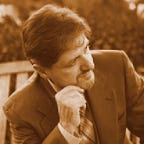Memorial
Palestine: 76 Years of Erasure
‘Our survival is at stake’
“She was 16 years old in the earliest photograph I saw of her. Her childhood photos were left in Yafa, to be trampled by the bulldozers that knocked down her home.”
— Ramsey Hanhan, Fugitive Dreams
On her 16th birthday, that’s May 15, 1948, mother lost her home and everything she owned and became a refugee. She had lived in Yafa, Palestine, which at the time and since World War I, was under British occupation. Yafa is now a neglected suburb of Tel Aviv, but in the 1930s and 1940s, Yafa was Palestine’s largest and most modern cities.
During her childhood, a ring of Zionist settlements grew and multiplied around Yafa, and other cities in Palestine. The new settlements housed Jewish immigrants from Europe, thrust on indigenous Palestinians by the British. By 1948, these Jewish settlements functioned as bases from which Zionist armies and terror groups attacked our cities and villages.
Yafa was bombarded until most of its residents resorted to fishing boats to save their lives. Their descendants are the people in Gaza’s refugee camps today, being bombed again.
My mom was “lucky” in 1948 to have been visiting her sister in Ramleh the day the road to Yafa was cut off.
City by city, village by village, massacre by massacre, Palestine was attacked and ethnically cleansed. My dad’s family were forced out of neighboring Ramleh later that summer. They ended up walking the 20–30 miles uphill to Ramallah.
A year that came to be called the Nakba, or Catastrophe, 1948 left 75% of Palestine devoid of its people, 450 villages destroyed and leveled to the ground, and 800,000 of us turned into refugees.
Israel was founded on our ruins.
That’s the story my parents bequeathed to me. Even though I have not experienced the Nakba myself, its trauma lingers down generations, embedded deeply in our family dynamics and values.
Still, I have never really grasped the Nakba until these last seven months of witness. Seeing live what is happening in Gaza; Living and reliving the emotional and psychological trauma of everyone there; Feeling my own helplessness to do anything to stop the genocide …
I conclude with a short essay I wrote a year ago for the Nakba’s 75th anniversary, and following the third round of Israeli bombardment of Gaza in two years (essay posted on my now-restricted LinkedIn). Keep in mind the following was written five months before the genocide began.
5/12/2023
PALESTINE, Where Next?
Seventy-five years ago, my mother lost her childhood, along with her home, her city — Yafa, and everything else those entailed. She became one of the 800,000 Palestinian refugees of the Nakba (Catastrophe), who since 1948 were denied their inherent right to return to their homes. Most of Yafa’s indigenous population crowded the refugee camps of Gaza after the Nakba, where their descendants now became an entrapped target for Israeli airstrikes that kill dozens, like Tamim Daoud, Hajar Bahtaini, Ali Izz Elddin, Mayar Izz Elddin, Layan Madoukh, Rami Hamdan, Eman Adas, and Yazan Alyan — 8 children among 30 Palestinians killed this week.
Describing the situation in Israeli-besieged Gaza, I wrote in Fugitive Dreams:
“There, the population remains almost hermetically sealed, for more than a decade and a half, with gunboats obstructing the shore, and drones patrolling from the sky. Periodically, Israel launched wars against Gazans, presumably to “destroy tunnels” (which the starving population needed to bring in food and necessities from Egypt), or to stop the launching of rockets that were their only audible SOS to the world. … Israeli planes bombing buildings, smoke filling the city. Under siege with no escape.”
Drones bomb and children die. Sixteen Palestinian children were killed in Israel’s August raids last year, and 67 children in May 2021. The rest of Gaza’s children live a nightly terror of bombs falling from the sky. Every child in Gaza is shell-shocked, with mental health consequences to follow them for a lifetime.
Concluding the book in April 2021, I wrote:
“No matter how the Wall turns, how the Occupation is clothed, or from what camera angle …, one fact is inescapable. Millions of human beings, within the borders of historical Palestine, are being treated differently, simply because their declared religion is not that of the state currently in power.”
Observing the growth of Israeli settlements, I wrote of the Nakba, not as an event in the past, but a continuing reality:
“Our survival on the Land was at stake. … the “slow-motion” version was already in progress. Finding it impossible to lead a normal life under occupation, people were leaving, like my brother Basman. Others, like myself and my friends … had flown overseas to study, and remained there.”
As the book went to press, a year later, Israel forcibly shut down seven Palestinian human rights organizations, and that after assassinating Palestinian-American reporter Shireen Abu Akleh. A year hence, no one has yet been held accountable. One wonders about the intended message of her murder — that no Palestinian is safe, even if they wore clear ‘PRESS’ markings and had US citizenship?
With the same callousness, Israel let a hunger-striking Palestinian political “prisoner” die. I use quotes because Khader Adnan was held for years without trial or even a charge — more properly a Hostage. This was last week, and last month came another callous attack on the Aqsa mosque in Jerusalem, as the Israeli police beat and arrested unarmed worshippers.
With Israeli leaders talking of Israel as a “Jewish state”, and asserting the “right” for Jews to settle anywhere within self-declared borders, what then are Israel’s plans for Palestinians?
“We remember!”
— Fugitive Dreams
(Photo by the author, Mahmoud Darwish memorial in Ramallah, Palestine, 2016).
With love,
Ramsey Hanhan
Author, Fugitive Dreams
